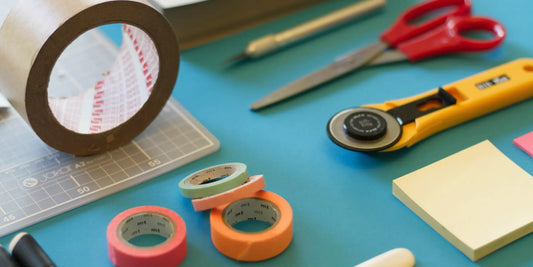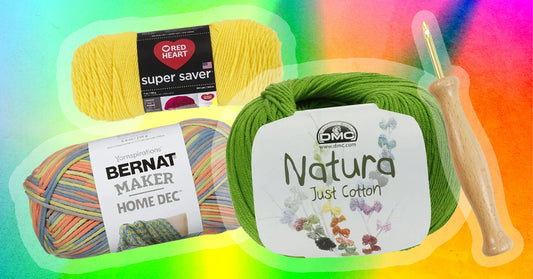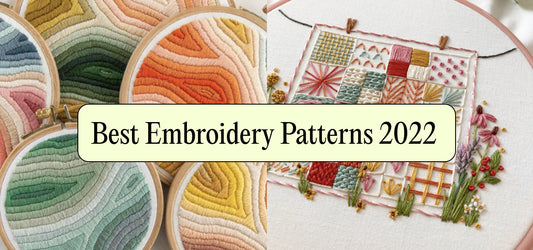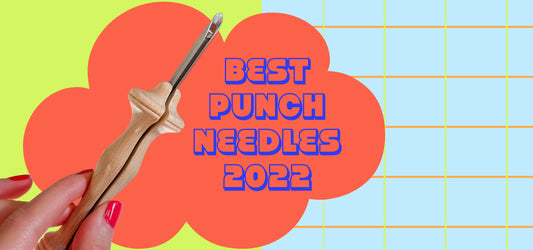Punch Needle: Answering Your 10 Most Asked Questions

Punch needle is a type of needlework that involves using a special tool to punch loops of thread through a fabric. It's a fun and easy way to create beautiful designs on rugs, wall hangings, and other textiles. In this guide, we'll answer our most asked questions about the technique. Ready to try it out? Check out our step-by-step guide on how to punch needle and find the best punch needle for you.
- Is punch needle easy?
- How does punch needle not come undone?
- Is punch needle easier than embroidery?
- How many strands of floss do you need for a punch needle?
- Can you punch needle on any fabric?
- Why does my punch needle thread keep coming out?
- What do you do with a finished punch needle?
- How do you seal punch needling?
- How do you finish punch needle edges?
1. Is Punch Needle Easy?
Yes, needle punching is a relatively easy craft to learn, especially if you already have some experience with embroidery or other needlework. The punch needle tool makes it easier to create consistent loops, and the technique can be adapted to create a range of different designs.
2. How Does Punch Needle Not Come Undone?
One of the advantages of punch needle over other types of needlework is that the loops of thread are secured on the back of the fabric. As you punch each loop, the needle creates a small knot that holds the thread in place. This means that the loops won't come undone even if you accidentally pull on them.
3. Is Punch Needle Easier Than Embroidery?
Punch needle and embroidery are both types of needlework, but they use different techniques and tools. Punch needle is generally considered to be easier than embroidery because the tool makes it easier to create consistent loops, and the loops are secured on the back of the fabric. However, both techniques can be used to create beautiful designs and have their own unique challenges and rewards.
4. How Many Strands of Floss Do You Need for a Punch Needle?
The number of strands of floss or yarn you use for punch needle will depend on the size of your punch needle tool and the thickness of the thread you're using. Generally, it's recommended to use 2-3 strands of embroidery floss for most punch needle projects. You may need to experiment with different thread thicknesses to find the right combination for your project.
5. Can You Punch Needle on Any Fabric?
Punch needle can be done on a variety of fabrics, but it's important to choose a fabric that's strong enough to hold the loops without tearing. Good options include cotton, linen, and monk's cloth. Avoid using thin or stretchy fabrics, as they may not hold up well to the punching.
6. Why Does My Punch Needle Thread Keep Coming Out?
If your punch needle thread keeps coming out, there may be a few different reasons. One common issue is that the needle is not inserted all the way into the fabric, which can cause the thread to slip out. Make sure you're using the right size needle for your fabric, and insert it firmly into the fabric before punching.
7. Do You Have to Glue the Back of Punch Needle?
You don't necessarily have to glue the back of your punch needle project, but it can help to prevent the loops from coming undone over time. One option is to use a fabric glue to secure the loops and trim any excess thread. Another option is to sew a fabric backing onto your project to cover the loops.
8. What Do You Do with a Finished Punch Needle?
Once you've finished your punch needle project, you can use it in a variety of ways. Rugs can be used as floor coverings, while wall hangings can be hung on the wall like art. You can also use punch needle designs to embellish clothing, bags, and other accessories.
9. How Do You Seal Punch Needling?
To seal a punch needle project, you can use a fabric sealant like Fray Check or a similar product. Simply apply the sealant to the edges of the fabric to prevent fraying. You can also sew a fabric binding around the edges to create a finished look.
10. How Do You Finish Punch Needle Edges?
There are a few different ways to finish the edges of a punch needle project, depending on the look you're going for. One option is to sew a fabric binding around the edges, which can help to prevent fraying and give your project a polished finish. Another option is to trim the edges of the fabric close to the loops and use a fabric sealant to prevent fraying.
Now that you know the basics of how to punch needle, you can start experimenting with different designs and techniques. With a little practice and creativity, you can create beautiful and unique textiles that showcase your personal style and creativity. Happy punching!










